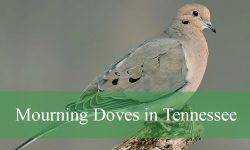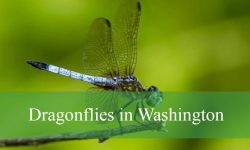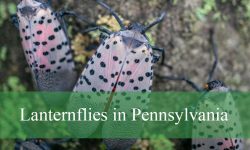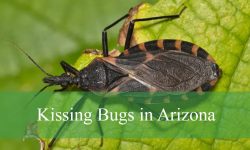In Minnesota, you can find an impressive range of biting ants, from the minuscule thief ant to the much larger carpenter ant. While many of these ants play important roles in the ecosystem, some can become pests when they invade homes, yards, or agricultural fields. Understanding their appearance, behavior, and habitats can help you identify and manage them more effectively.
Some species, like field ants and cornfield ants, are commonly found outdoors in grassy or wooded areas, while others, such as odorous house ants and pavement ants, frequently enter homes in search of food. A few species are aggressive defenders of their colonies, delivering painful bites or spraying formic acid when threatened.
In this guide, we’ll explore ten types of biting ants in Minnesota, covering their physical traits, nesting habits, behavior, and distribution across the state. By the end, you’ll know how to recognize them and better understand which ones are harmless and which can become a real nuisance.
Different Types of Biting Ants Found in Minnesota
Field Ant (Formica spp.)
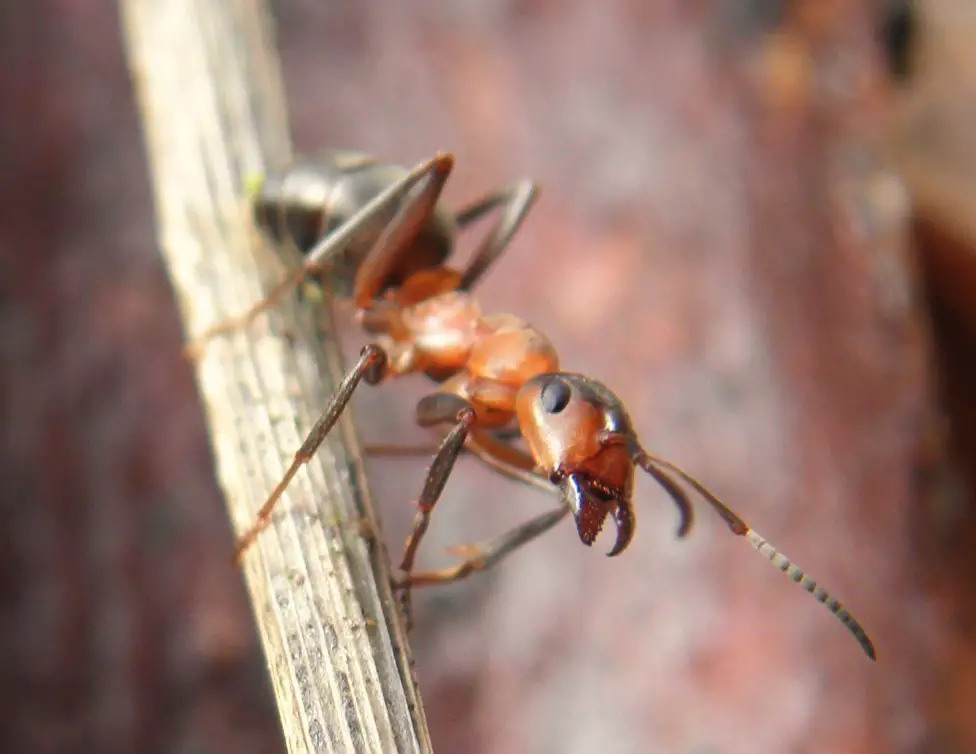
Field ants are among the most common ants in Minnesota and are often confused with carpenter ants because of their size and dark coloring. They can range from reddish-brown to black and typically measure between 4 and 8 millimeters in length. These ants are known for building large dome-shaped mounds in open fields, pastures, and forest clearings. Unlike carpenter ants, they do not tunnel into wood but instead prefer soil for nesting.
Identification is fairly straightforward, as field ants have a segmented body with an uneven thorax and a distinctive single node at the waist. Their mandibles are strong, allowing them to bite when threatened, though their bite is not venomous. They are often seen foraging in long trails, especially in the summer months.
Behaviorally, field ants are active during the day and feed on honeydew produced by aphids, dead insects, and other organic materials. They are aggressive defenders of their nests and will swarm out if disturbed, biting intruders repeatedly. While their bites are not as painful as stings from fire ants, they can still cause discomfort.
In Minnesota, field ants are widely distributed across grasslands, prairies, and open woodlands. They are beneficial in some cases because they aerate the soil and control pest insects. However, their large mounds can become a nuisance in lawns and pastures.
Carpenter Ant (Camponotus pennsylvanicus)
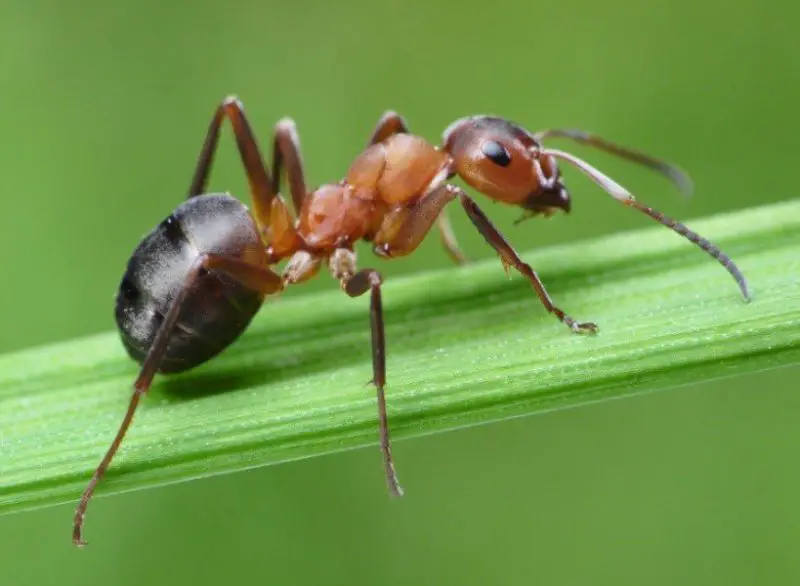
Carpenter ants are one of the largest biting ants in Minnesota, with workers ranging from 6 to 13 millimeters long. They are usually black but may also have reddish tones depending on the species. Unlike termites, carpenter ants do not eat wood; instead, they excavate it to create extensive tunnel systems for nesting. This habit makes them a significant structural pest in homes and buildings.
These ants are easily recognized by their large size, heart-shaped head, and smooth thorax profile. They have strong mandibles capable of delivering painful bites, which they use to defend themselves and their colonies. In addition to biting, they sometimes spray formic acid into wounds, intensifying the burning sensation.
Carpenter ants are nocturnal foragers and prefer sweet substances, plant juices, and other insects. Colonies can contain thousands of individuals and often split into satellite colonies, which makes complete eradication difficult once they infest a structure. Their activity is most noticeable in spring and summer when they forage indoors and outdoors.
In Minnesota, carpenter ants are widespread, especially in wooded areas and suburban neighborhoods with decaying wood. They thrive in moist environments and are often found near leaky roofs, damp basements, and rotting tree stumps. Because of their ability to damage wooden structures, they are considered one of the most problematic biting ants in the state.
Thief Ant (Solenopsis molesta)
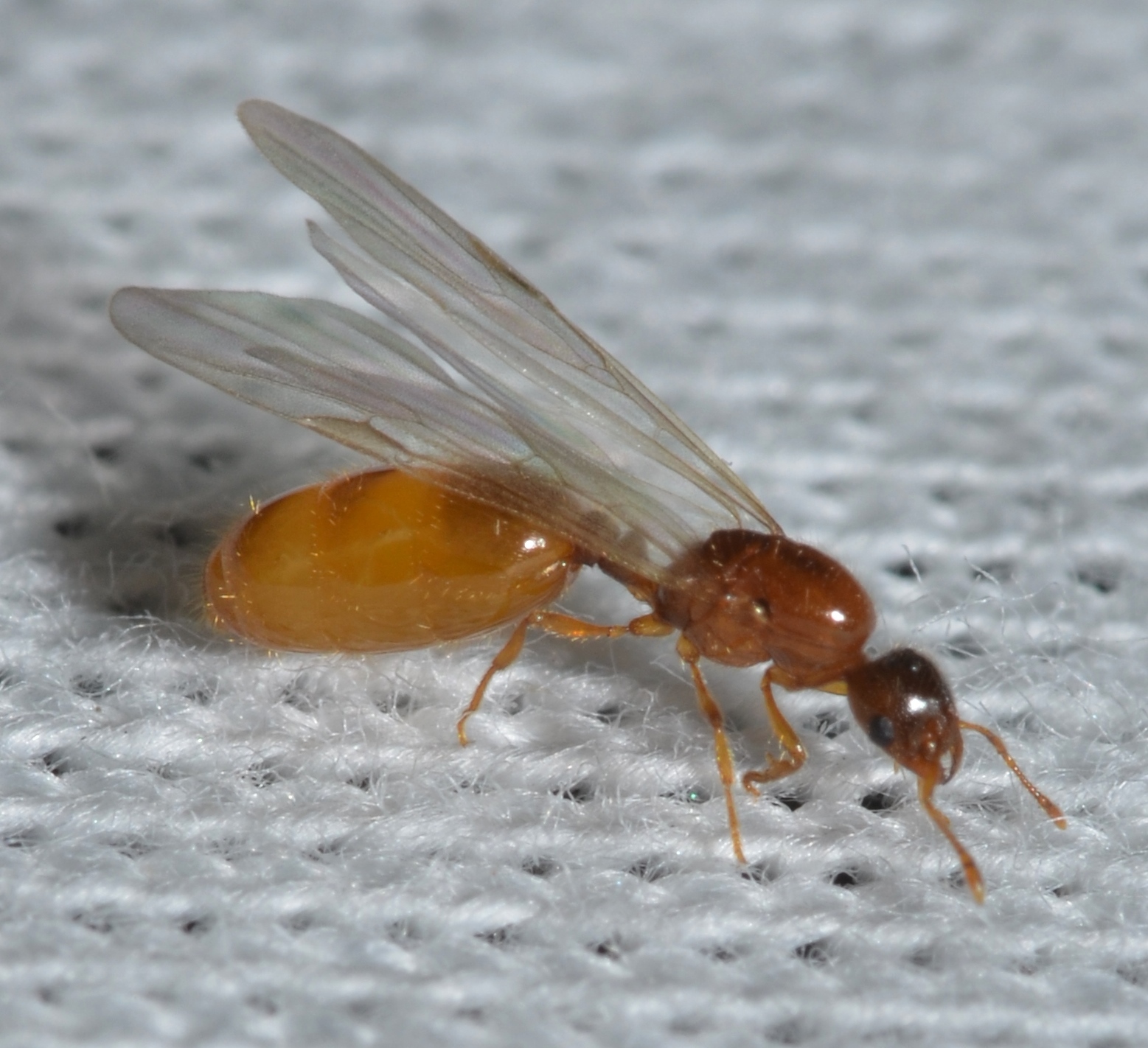
Thief ants are among the smallest biting ants in Minnesota, usually measuring only 1.5 to 2.2 millimeters long. They are pale yellow to light brown in color and are sometimes mistaken for pharaoh ants. Despite their tiny size, they have strong jaws relative to their body and can bite when handled. Their name comes from their tendency to build nests close to other ant colonies and steal food or larvae.
They can be identified by their small size, uneven thorax, and two-segmented waist. Thief ants are difficult to detect because of their tiny size and tendency to travel in narrow, barely visible trails. Indoors, they are often seen foraging in kitchens and pantries, where they feed on greasy or protein-rich foods.
Thief ants are persistent pests because their colonies are small but numerous, often containing thousands of workers and multiple queens. They can spread easily within buildings, making them hard to control. Although their bites are not particularly painful, their presence indoors can be a major nuisance, and they can potentially spread foodborne pathogens.
In Minnesota, thief ants are common both indoors and outdoors. They nest in soil, under rocks, or inside wall voids, especially during warm months. Their adaptability to human environments makes them one of the most frequently encountered household biting ants in the state.
Pavement Ant (Tetramorium immigrans)
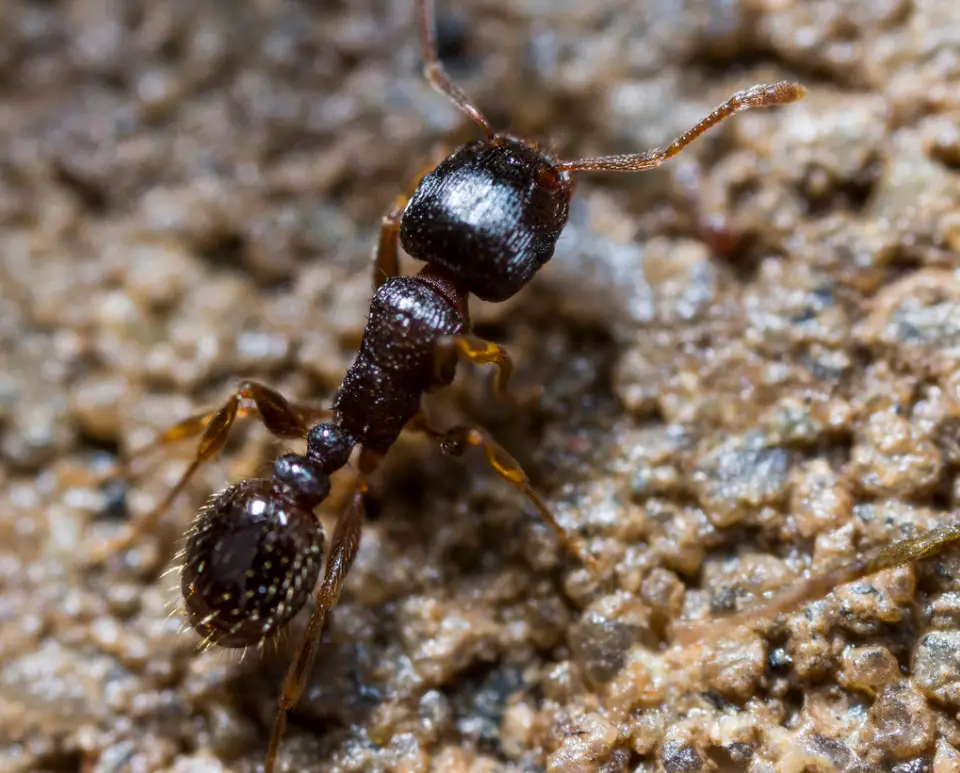
Pavement ants are named for their preference for nesting under sidewalks, driveways, and building foundations. They are small ants, typically 2.5 to 4 millimeters long, with dark brown to black coloration and parallel grooves on the head and thorax. In Minnesota cities, they are among the most common household ants.
These ants are identifiable by their two-segmented waist, small size, and habit of creating soil mounds between cracks in pavement. They are opportunistic foragers and feed on a wide range of foods, including sweets, proteins, and greasy substances. When disturbed, they are capable of delivering small but noticeable bites.
Pavement ants are aggressive toward other ant colonies, often engaging in large territorial battles during spring and summer. They reproduce quickly and can establish nests both indoors and outdoors, making them a frequent pest in urban areas. Their colonies may contain thousands of workers, which complicates control efforts.
In Minnesota, pavement ants are most commonly found in urban and suburban environments, particularly around sidewalks, parking lots, and building foundations. They can also invade homes, where they forage in kitchens and pantries. While their bites are not medically significant, their sheer numbers can make them unwelcome pests.
Cornfield Ant (Lasius neoniger)

Cornfield ants are a native species in Minnesota, commonly found in lawns, gardens, and agricultural fields. They are small ants, measuring 2 to 4 millimeters long, with a brown to black body. Their colonies are usually located in the soil, often marked by small soil craters in open grassy areas.
They can be identified by their relatively uniform dark color, single waist node, and small size. Cornfield ants are active foragers that feed on honeydew from aphids, seeds, and other organic material. Although they are not highly aggressive, they are capable of biting if handled, and their bite can cause minor irritation.
These ants are not major structural pests but can be a nuisance when they invade homes in search of food. Outdoors, they play a role in the ecosystem by controlling aphid populations and aerating soil. However, in agricultural settings, they can sometimes encourage aphid infestations by protecting them in exchange for honeydew.
In Minnesota, cornfield ants are widespread across rural areas, lawns, and farm fields. They are especially common in the late summer and fall when winged reproductives swarm in large numbers. Though their bites are mild, they are one of the most frequently encountered biting ants in open landscapes across the state.
Allegheny Mound Ant (Formica exsectoides)
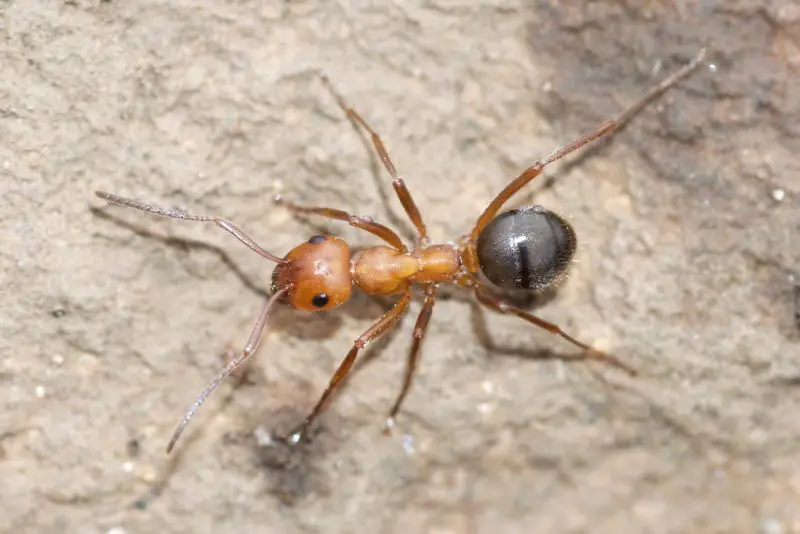
The Allegheny mound ant is a striking species found in parts of Minnesota, easily recognized by its large reddish head and thorax contrasted with a dark brown to black abdomen. Workers typically measure 4 to 6 millimeters in length. What makes them stand out most are their massive mounds, which can reach up to three feet in diameter and two feet high, often found in open meadows and forest edges.
Identification is fairly simple since their large mounds are hard to miss, and the reddish upper body sets them apart from other field ants. Colonies can number in the hundreds of thousands, making them one of the most dominant ground-nesting ants in the state. They are aggressive defenders of their nests and will readily bite intruders.
Behaviorally, Allegheny mound ants are predators and scavengers, feeding on insects, honeydew, and plant juices. They are notorious for injecting formic acid into surrounding vegetation, which kills plants and clears more space for their expanding mounds. Their bites, though not venomous, can be quite painful and leave a burning sensation due to formic acid.
In Minnesota, these ants are more common in open areas like prairies, abandoned fields, and sunny clearings in woodlands. They are less likely to invade homes but can be a nuisance outdoors, particularly where their mounds interfere with landscaping or recreational spaces.
Red Imported Fire Ant (Solenopsis invicta)
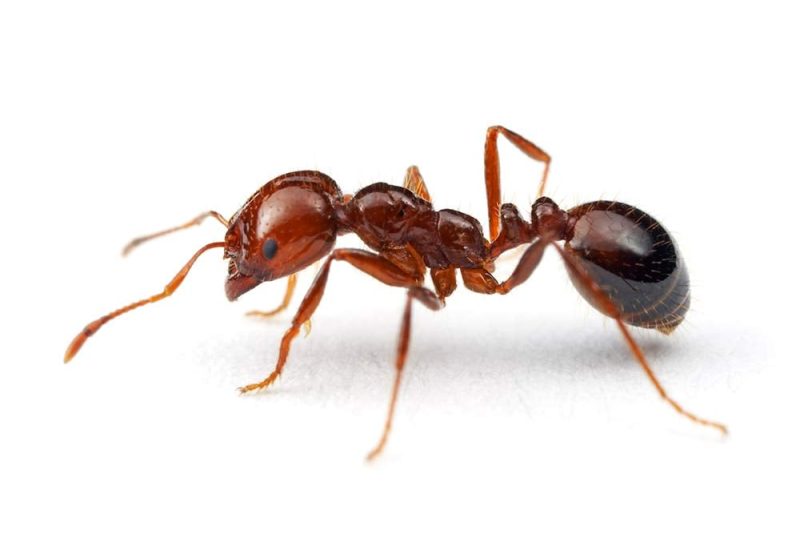
While not native to Minnesota, red imported fire ants occasionally show up when transported in soil, nursery plants, or cargo. These ants are reddish-brown with darker abdomens, and workers range from 2.5 to 6 millimeters in size. They are infamous for their aggressive swarming behavior and painful stings, which are more severe than bites from native ants.
Fire ants are identifiable by their reddish coloration, two-segmented waist, and strong mandibles. However, their most feared weapon is their sting: after biting to anchor themselves, they inject venom through repeated stings. This venom causes burning pain, pustules, and sometimes allergic reactions in sensitive individuals.
Colonies are extremely large, often containing hundreds of thousands of workers and multiple queens. They build dome-shaped mounds in open, sunny areas such as lawns, pastures, and fields. Fire ants forage aggressively for proteins, sugars, and dead animals, making them both an ecological threat and a public health concern.
In Minnesota, established colonies are rare because the colder climate limits their survival. However, sporadic infestations have been detected indoors or in greenhouses. While unlikely to become widespread in the state, their accidental introductions remain a concern for public safety.
Odorous House Ant (Tapinoma sessile)
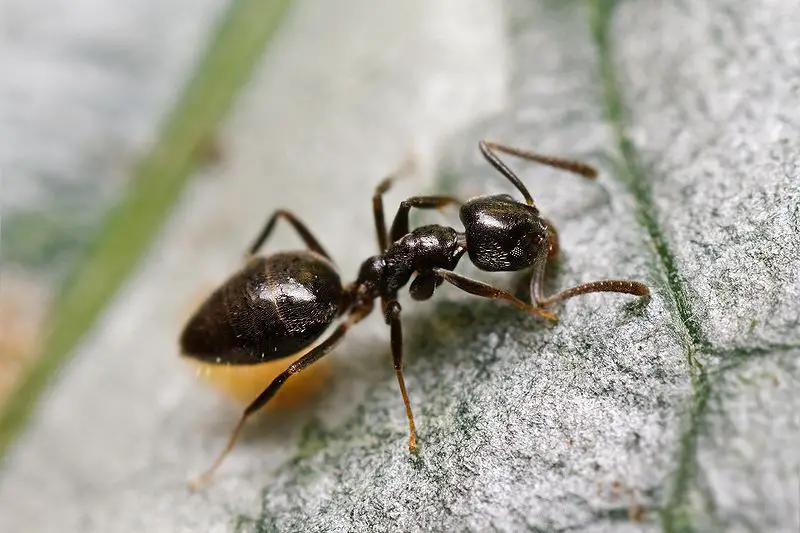
Odorous house ants are one of the most common nuisance ants in Minnesota homes. They are small, about 2.5 to 3.5 millimeters long, and dark brown to black in color. Their name comes from the strong, rotten-coconut smell they emit when crushed. Although they are not as aggressive as fire ants or carpenter ants, they can still bite if provoked.
They can be identified by their small size, uneven thorax, and single waist segment that lacks a prominent node. Colonies are often polygynous, meaning they have multiple queens, which makes them resilient to control efforts. Indoors, they are most frequently seen foraging in kitchens for sweets and proteins.
Behaviorally, odorous house ants are highly adaptable. They can nest in soil, under rocks, or inside buildings, especially in wall voids and insulation. They do not sting, and their bites are weak, but their large colony sizes and rapid spread make them persistent pests.
In Minnesota, these ants are common in both rural and urban settings. They are especially problematic during wet weather when outdoor colonies migrate indoors. While their bite is mild, their presence in large numbers inside homes makes them one of the most bothersome ants in the state.
Yellow Meadow Ant (Lasius flavus)
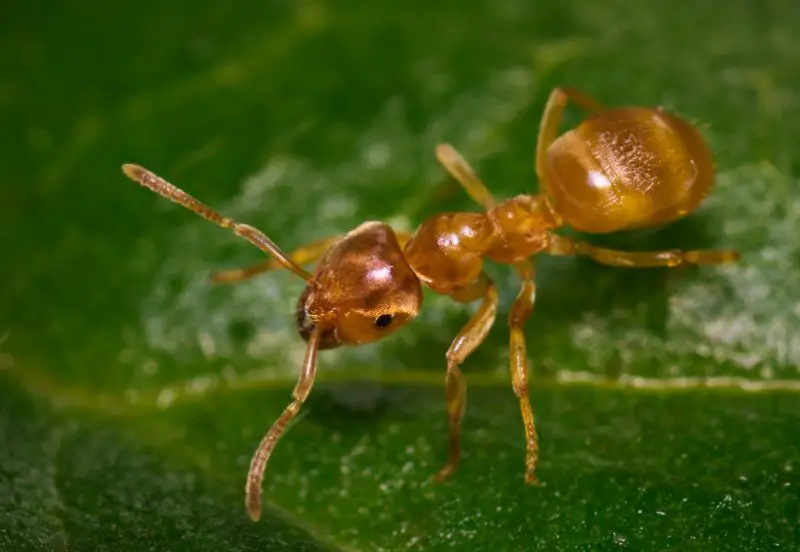
The yellow meadow ant is a subterranean species that is less commonly seen above ground in Minnesota. Workers are small, ranging from 2 to 4 millimeters long, and are easily distinguished by their yellow to orange bodies. Because they live underground, encounters with them are usually limited to garden or lawn disturbances.
Identification features include their bright coloration and small size. Colonies can live for decades and are known for producing large swarms of winged ants in late summer. They rarely invade homes but may appear in basements or near foundations if disturbed.
Yellow meadow ants are not aggressive but can bite when handled. Their bites are not painful and cause only minor irritation. They primarily feed on honeydew from aphids, which they farm underground by protecting and tending to aphid colonies on plant roots.
In Minnesota, they are usually found in grassy areas, pastures, and lawns where soil conditions are favorable for tunneling. Though not considered serious pests, they play a role in soil aeration and nutrient cycling. Their subterranean habits mean most people are unaware of them until swarming events occur.
Acrobat Ant (Crematogaster spp.)
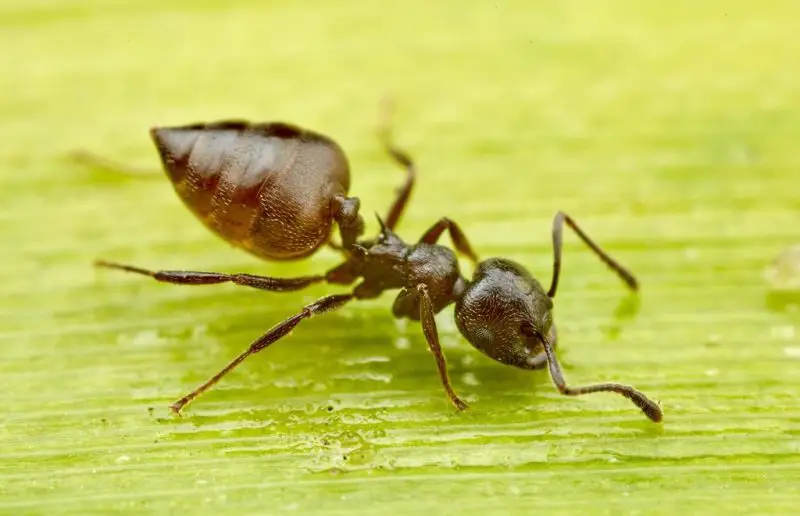
Acrobat ants are named for their unique defensive posture, where they raise their heart-shaped abdomen over their thorax when threatened. They are small to medium ants, about 2.5 to 3 millimeters long, and range in color from light brown to black. They can bite when provoked and are also capable of releasing a foul-smelling odor.
Identification is easy due to their distinctive heart-shaped gaster and ability to arch their bodies in an acrobatic fashion. Colonies are usually moderate in size and are often found nesting in decayed wood, under stones, or within insulation in homes.
These ants are opportunistic feeders, eating sweets, proteins, live insects, and honeydew. Although they are not as destructive as carpenter ants, they can nest inside damaged wood or voids in buildings. Their bites are not medically significant but can be startling, especially when many ants swarm together.
In Minnesota, acrobat ants are common in wooded areas, residential yards, and occasionally indoors. They are most often encountered during summer months when they forage widely in search of food. While they are minor pests compared to carpenter ants, their biting behavior and nesting habits can make them troublesome in homes.
FAQs about Biting Ants in Minnesota
What types of ants in Minnesota bite humans?
Several species in Minnesota are capable of biting, including field ants, carpenter ants, thief ants, pavement ants, and Allegheny mound ants. While most bites cause only mild irritation, carpenter ants can deliver a more painful bite and sometimes spray formic acid.
Are fire ants found in Minnesota?
Red imported fire ants are not native to Minnesota and cannot survive long-term in the state’s cold climate. However, they have occasionally been reported indoors or in soil transported from southern states. They are rare and unlikely to establish permanent colonies outdoors in Minnesota.
Do carpenter ants in Minnesota bite or sting?
Carpenter ants bite with their strong mandibles and may spray formic acid into the wound, causing a burning sensation. They do not sting. Their bites can be painful but are not considered medically dangerous.
Which biting ant is most common in Minnesota homes?
The odorous house ant and pavement ant are the most frequently encountered indoors. Both can bite if provoked, but their bites are mild. Their main nuisance factor is their large colony size and persistence in kitchens and pantries.
How can I prevent biting ants from invading my home?
You can reduce ant infestations by sealing cracks around windows and foundations, keeping food stored in sealed containers, cleaning up spills quickly, and trimming vegetation away from your home. For persistent infestations, professional pest control may be needed.
Do ant bites in Minnesota pose health risks?
Most ant bites in Minnesota are not medically significant and cause only minor discomfort, redness, or itching. Unlike fire ants in the southern U.S., local species rarely cause serious allergic reactions. Still, individuals with sensitive skin may experience more irritation.

